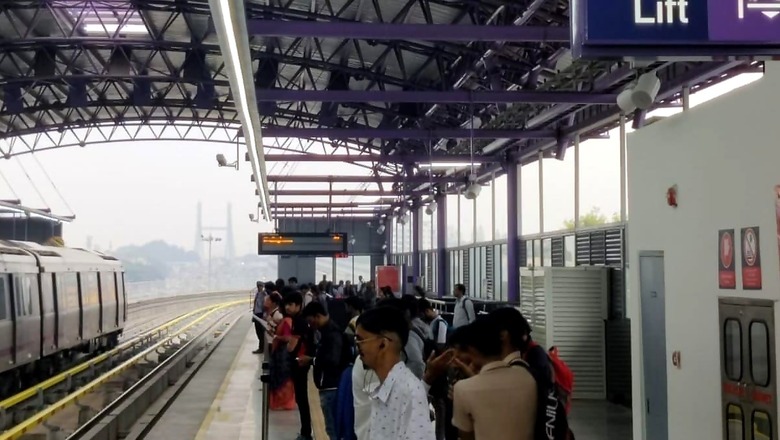
views
At 5 am on Monday, Bengaluru’s city rail network, Namma Metro, made its entire purple line fully operational, and the city saw a new beginning to ease its traffic woes. For people like Pallavi Shinde, who works with an IT firm in Whitefield, her commute, which used to take 2 hours one way, has been reduced to just 40 minutes.
News18 travelled on the 43.5-km stretch covering 37 metro stations to speak to the people about their experience.
“With my salary, I cannot afford to stay in the Whitefield-Brookefield area of Bengaluru, and so it would take me a good two hours to reach the office. From my place near Vijayanagara, I would get off at the Byappanahalli metro station and then take a taxi or bus to my place of work. Apart from the time consumed, half my energy is spent even before I start work. Today, for the first time in years, I felt fresh when I stepped out of the new Whitefield station,” Shinde said, adding that even the breakfast she carries to work was still warm.
In the train, there were repeated announcements of the new extension lines that were opened, bringing Bengaluru’s southwest and eastern regions closer.
The ridership on the Byappanahalli-Whitefield route on Monday was as high as 61,179 compared to 28,000 passengers on average daily.
There is a running joke that places like Whitefield were so disconnected from Bengaluru city that it was even termed the ‘Republic of Whitefield’ as people from the area would not dare to come towards the city as it would take them hours to return home.
“That’s true. That’s how we tease our friends,” laughed Praveen Menezes, who finally decided to buy an annual metro card as he will be able to use the train services between Hope Farm and his home in Rajajinagar on a daily basis.
This was in the early hours of the morning. By noon, as the word spread through electronic and social media, people began to flock to the metro stations.
Three young students from a city school located in Bengaluru’s central business district were excited as they were told about the new extended purple metro line in their school.
“Our teacher was talking about Bengaluru and how the traffic affects people when she mentioned that today the new line has been opened up. We use the metro daily to go home near Indiranagar. We are so happy to see the number of metro stations on our line going up to 36. We will ask our parents and go the whole stretch on Friday after school,” they told this reporter.
Though the Purple line, which was one of the very first lines to have been inaugurated between Byappanahalli and MG road in 2011, has over the years slowly extended its reach, and today connects the 49.2-km stretch between Challaghatta on Mysore Road to Whitefield in east Bengaluru in an hour.
There were many passengers who were not aware of the Purple line being fully operational, as there was no formal inauguration by the government. To increase awareness, announcements were being made at regular intervals for people to use the facilities starting Monday.
Although the metro offers an alternative to Bengaluru’s congested traffic, which sees over 1.5 crore vehicles on the road daily, deteriorating and potholed roads posed issues while planning the project, which has seen over a decade of delay. The total operational metro lines span only 73.18 km, averaging just over 5.62 km of new metro lines per year.
Bengaluru has grappled with traffic issues and deteriorating infrastructure, subjecting its residents to daily commute challenges despite the city’s claims as being India’s silicon capital.
According to the Bengaluru Metro Rail Corporation Limited (BMRCL), the construction cost for the two stretches connecting Whitefield (Kadugodi) to Kengeri and Challaghatta amounted to Rs 363.48 crore and Rs 167.97 crore, respectively.
With the launch of these new segments, Bengaluru’s metro rail network will expand from 69.66 km to 73.81 km, covering a total of 66 metro stations.
















Comments
0 comment